Get PeakVisor App
Sign In
Search by GPS coordinates
- Latitude
- ° ' ''
- Longitude
- ° ' ''
- Units of Length

Yes
Cancel
Share ×

Scan the QR code and open PeakVisor on your phone
❤ Wishlist ×
Choose
Delete
Explore one of the last remaining Mediterranean steppe landscapes in Italy when visiting Alta Murgia National Park. There are 41 named mountains in Alta Murgia National Park. Torre Disperata (686 m/2,251 ft) is the highest point. The most prominent mountain is Monte Caccia (686 m/2 251 ft).
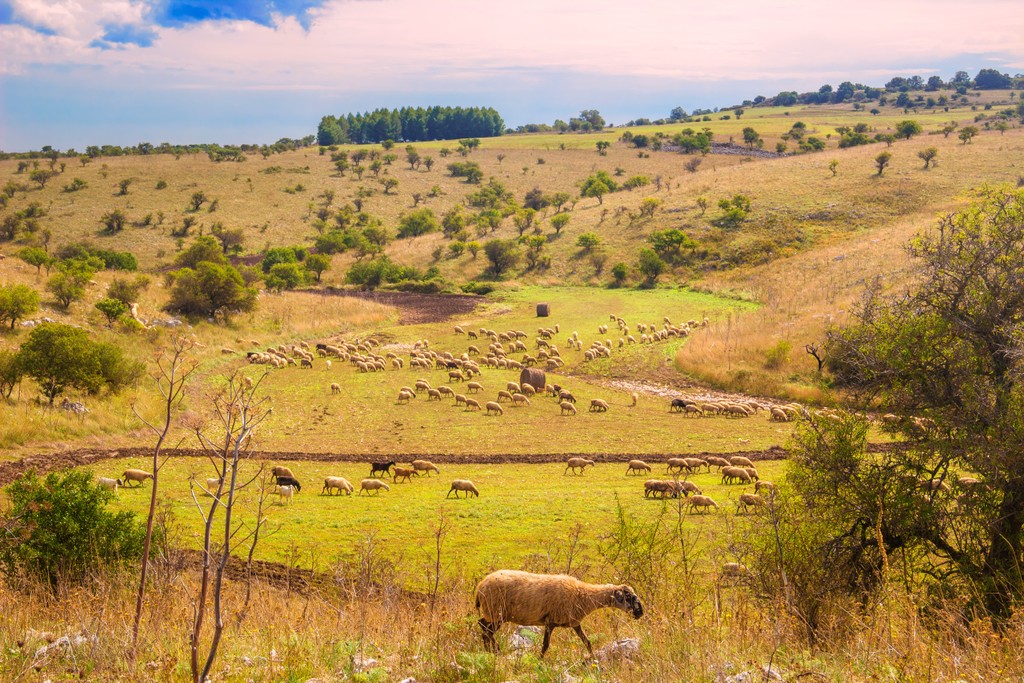
Alta Murgia National Park (Parco Nazionale dell'Alta Murgia) is an area of protected countryside located in Apulia (Puglia), southern Italy. It encompasses an area of 680.7 sq km (262.8 sq mi) within the Metropolitan City of Bari and the Province of Barletta-Andria-Trani.
Alta Murgia National Park centers around the Murge (Altopiano delle Murge), a 4,000 sq km (1,544 sq mi) karst plateau and a sub-region of Apulia. The park's main feature is the Alta Murgia (High Murgia), a low mountainous area located in the northwest section of the plateau.
The landscape of Alta Murgia National Park can be characterized as a mixture of dry sub-Mediterranean plains and rocky pastures to the south and swathes of oak and evergreen forests to the north.
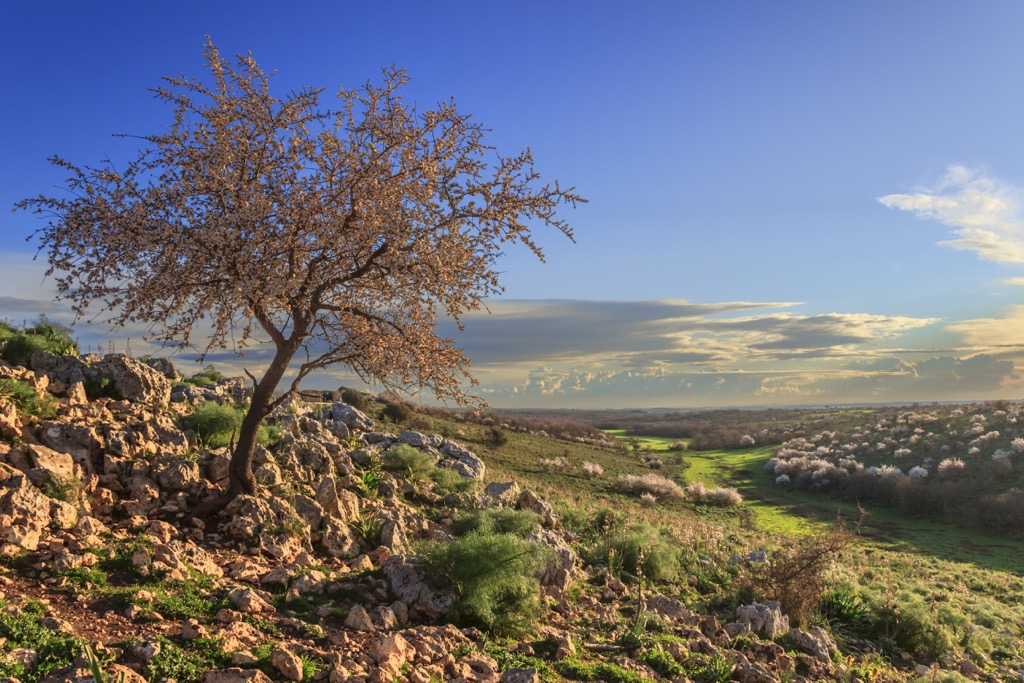
Alta Murgia National Park is close to several other regional and national parks. Terra delle Gravine Regional Natural Park (Parco Naturale Regionale Terra delle Gravine) is located approximately 50 km (31 mi) southeast of Alta Murgia National Park. Gargano National Park (Parco Nazionale del Gargano) is located approximately 60 km (37 mi) northwest of Alta Murgia National Park.
Alta Murgia National Park's headquarters is located in the town of Gravina in Puglia. Other nearby settlements include Altamura, Corato, and Ruvo di Puglia. Bari, one of the largest cities in southern Italy, is located approximately 35 km from Alta Murgia National Park.
The Murge plateau is made up of carbonate rocks, predominantly limestone. It's composed of two limestone platforms, "Limare di Bari" and "Limare di Altamura," which formed around 130 million years ago during the Cretaceous period. In places, these limestone platforms are over 3,000 m (9,843 ft) thick.
The Murge plateau trends in the same direction as the Fossa Bradanica. The Fossa Bradanica is a large tectonic depression filled with clay and sand-like Plio-Pleistocene sediments. The Fossa Brandanica extends from the Gulf of Taranto to Termoli.

Over millions of years, erosion caused by rainfall and wind has subjected the Murge plateau to karst phenomena. As a result, there are many sinkholes and caves across Alta Murgia National Park.
The largest sinkhole in Alta Murgia National Park is Pulo di Altamura, which is located 10 km (6 mi) north of Altamura. Pulo di Altamura has a diameter of over 500 meters (1,600 ft) and reaches depths of 450 m (1,480 ft).
Many of the sinkholes within Alta Murgia National Park are "collapsed dolines", which form when the vaults of underground cavities collapse. There are numerous caves across the Murge plateau, the largest of which is Grotta di Cristo.
The Pontrelli quarry near Altamura is known as the "valley of dinosaurs." In 1999, archeologists uncovered five dinosaur specimens preserved in limestone and over 30,000 dinosaur footprints in the quarry. These discoveries make the quarry one of the richest fossil deposits worldwide.
Today, Alta Murgia National Park contains the Murge plateau's highest summits: Torre Disperata (686 m/2,251 ft) and Monte Caccia (686 m/2,251 ft). Other notable mountains in Alta Murgia National Park include Serra Ficaia (672 m/2,205ft), Monte Scorzone (668 m/2,192 ft), and Monte Lama Torta (641 m/2,103 ft).
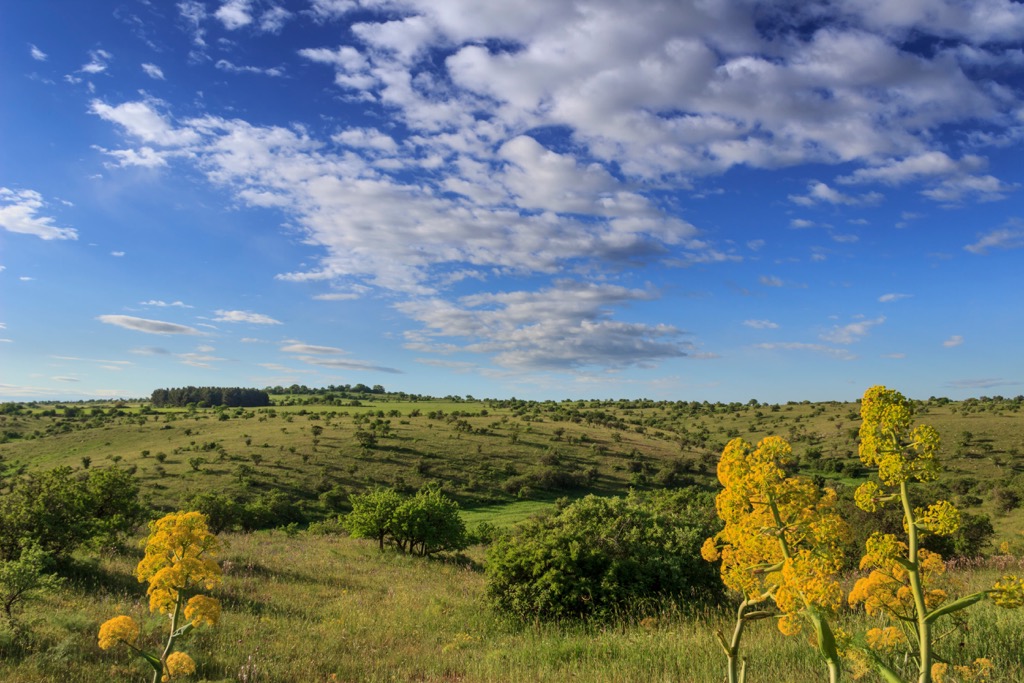
From arid plains to evergreen forests, Alta Murgia National Park features a variety of habitats that support an array of flora and fauna. Read on to learn about Alta Murgia National Park's wildlife.
A number of mammal species inhabit Alta Murgia National Park, including wolves, foxes, stone martens, and weasels. Several small prey mammals are also present, like Savi's pine voles, Etruscan shrews, and wild mice.
Additionally, the park is home to several bat species, notably greater mouse-eared bats, greater horseshoe bats, and common bent-wing bats.
The Murgese, a breed of local horse, has been bred on the Murge plateau since the Middle Ages. It was the steed of choice for Italian knights in the fifteenth and sixteenth centuries.
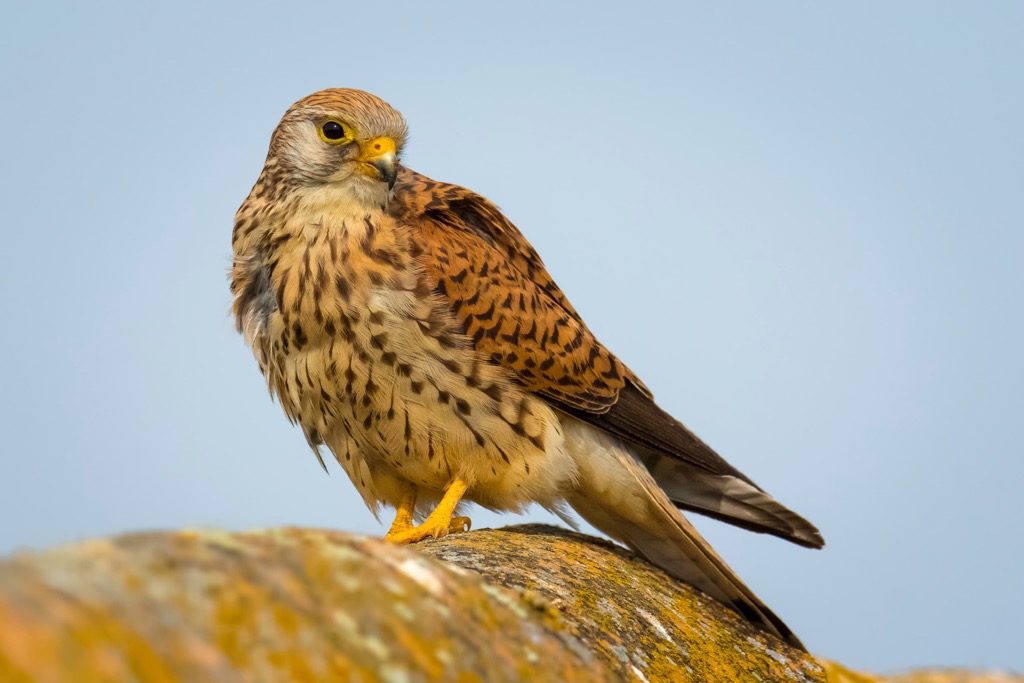
Roughly 124 bird species nest or winter in Alta Murgia National Park. Alta Murgia National supports nationally important populations of several lark species, including greater short-toed larks, woodlarks, and Calandra larks.
The steppes of Alta Murgia National Park are home to lesser kestrels, which are a priority species for conservationists. Other notable birds of prey include red kites, lanner falcons, buzzards, and long-eared owls.
The Alta Murgia also supports a healthy population of amphibian and reptile species, many of which are endemic to central and southern Italy. These species include European ratsnakes, yellow-bellied toads, Kotschy's geckos, and Hermann's tortoises.
The forests of Alta Murgia National are composed primarily of oaks, including holm oaks, downy oaks, turkey oaks, and kermes oaks. Common plants found in the undergrowth include honeysuckles, common hawthorns, dog-roses, peonies, and Italian arums.
Since the 1930s, large-scale reforestation has occurred in the Alta Murgia, involving an area of approximately 250 sq km (97 sq mi). This reforestation concerns planting Aleppo pine forests, as well as common cypresses. In the undergrowth of the park's pine forests grows mastics and narrow-leaved mock privets.
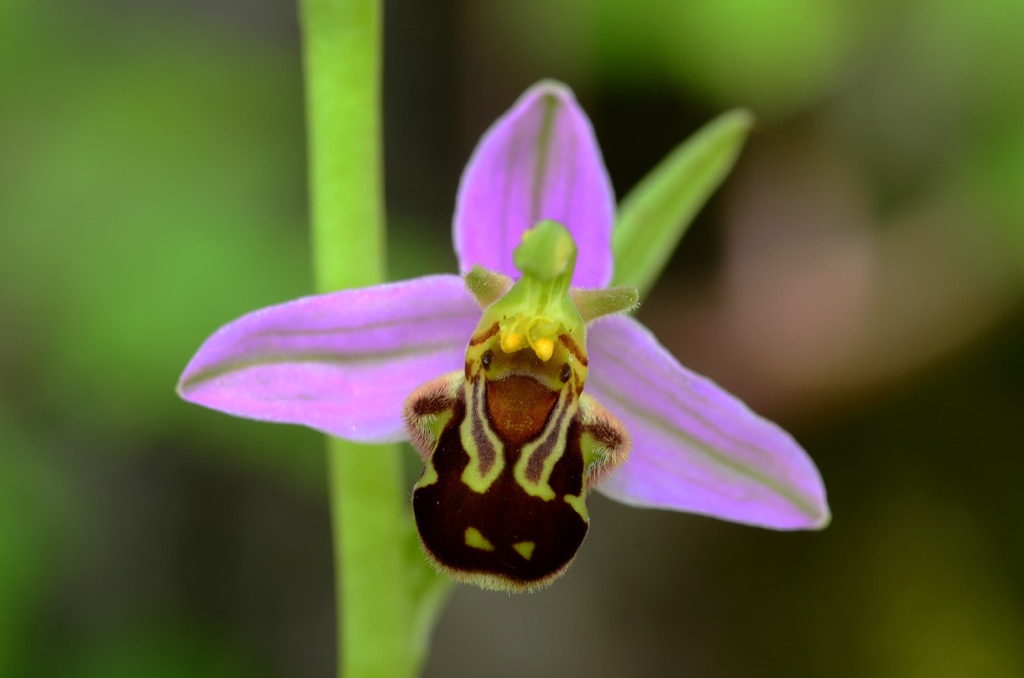
Across the park, open plains grow a number of orchid species, including the Ophrys murgiana, a genus of bee orchid only recently identified.
Arboreal shrubs commonly found on the plains, pastures, and woodlands of Alta Murgia include garland thorns, common medlars, and almond-leaved pears.
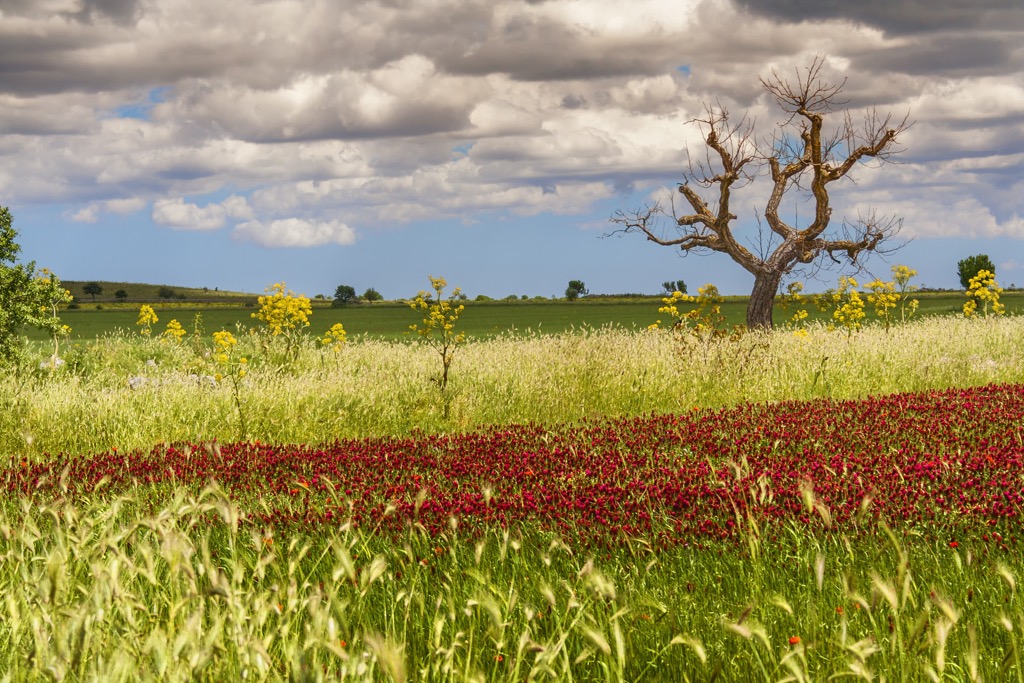
Humans have been living on the Murge plateau for at least 150,000 years. Archeologists uncovered the Altamura Man in the Lamalunga Cave (Grotta di Lamalunga), one of Europe's best-preserved and most complete Paleolithic skeletons.
The Altamura Man is so well-preserved that even the bones of the inner nose are intact. The skeleton has provided the oldest Neanderthal DNA to be successfully sequenced. It's considered one of Italy's most important archeological discoveries.
Archeologists made another fascinating discovery 13 km (8 mi) from Corato in the locality of San Magno. They unearthed a necropolis of tumulus tombs dating back to between the seventh and fourth centuries BCE.
These tombs were wide and rectangular and were encased in dolmen-like megalithic slabs. Over 100 tombs were discovered, some of which contained fragments of pottery and iron and bronze artifacts.
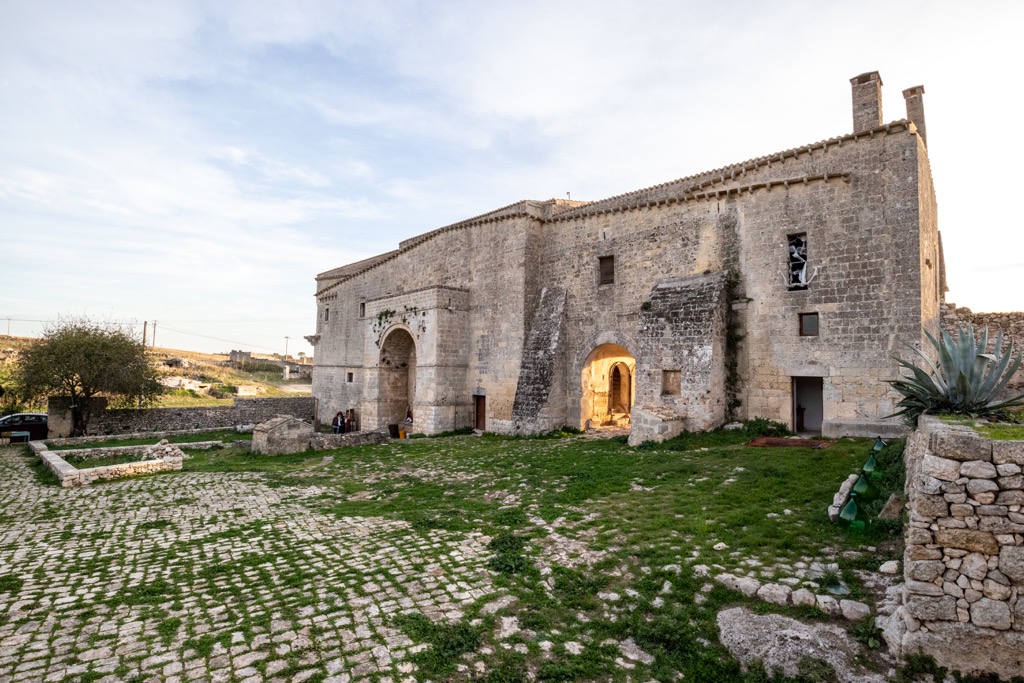
An important part of the Murge plateau's human history is transhumance farming. This type of seasonal animal husbandry has been happening on the Merge plateau since the first century BCE, with local farmers moving their livestock to Abruzzo in the summer.
There's evidence of transhumance farming clearly visible across the Murge plateau's landscape. Jazzi, small stone sheep breeding enclosures built on mountain slopes, are frequently seen across the park.
Farmers have built masserie across the Murge plateau since the fifteenth century. These fortified farmhouses are a staple of Apulia; some are still in operation today and are popular tourist attractions.
The most famous building in Alta Murgia National Park is Castel del Monte, a thirteenth-century citadel constructed by Holy Roman Emperor King Frederick II. It's one of the most famous castles in Italy and appeared on the Italian version of the one-cent Euro coin.
Alta Murgia National Park was established in 2004 to protect the park's endangered wildlife, historical sights, and cultural heritage.
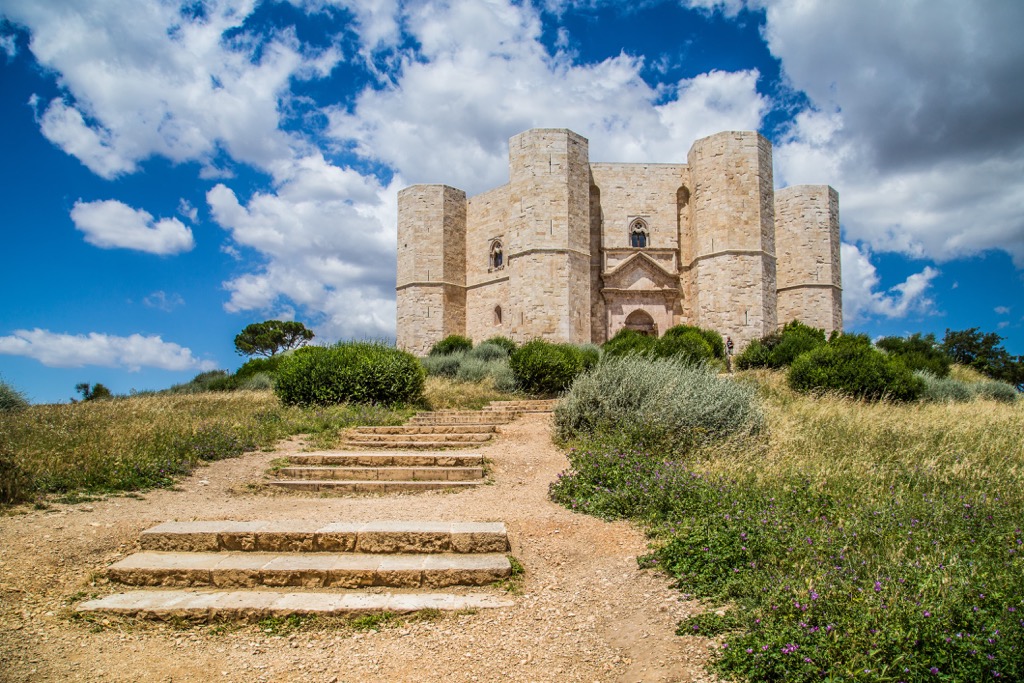
From ancient medieval citadels to remarkable karst formations, Alta Murgia National Park is a hidden gem for hikers.
Alta Murgia National Park is relatively remote and doesn't have a well-developed trail system. As a result, hikers should come well-prepared with maps, suitable clothing, and plenty of food and water. Ensure you inform others of your itinerary before setting off.
Consider booking a local guide if you're an inexperienced hiker or want to learn more about the area during your visit. You can find a list of local guides on the park's website.
You should also consider visiting the Guardian Tower Visitor Center (Centro Visita Torre dei Guardiani) near the park's center to learn more about local hiking trails.
Read on to learn about some of the best hikes in Alta Murgia National Park.
Castel del Monte (554 m/1,818 ft) is the crown jewel of Alta Murgia National Park. This thirteenth-century citadel was declared a UNESCO World Heritage Site in 1996 and is one of the finest examples of medieval military architecture in Italy.
Castel del Monte lacks a moat and a drawbridge despite appearing to be a defensive fortification. However, archeologists have uncovered evidence that a curtain wall once surrounded the castle. Some believe King Frederick II used Castel del Monte as a hunting lodge rather than a fortress.
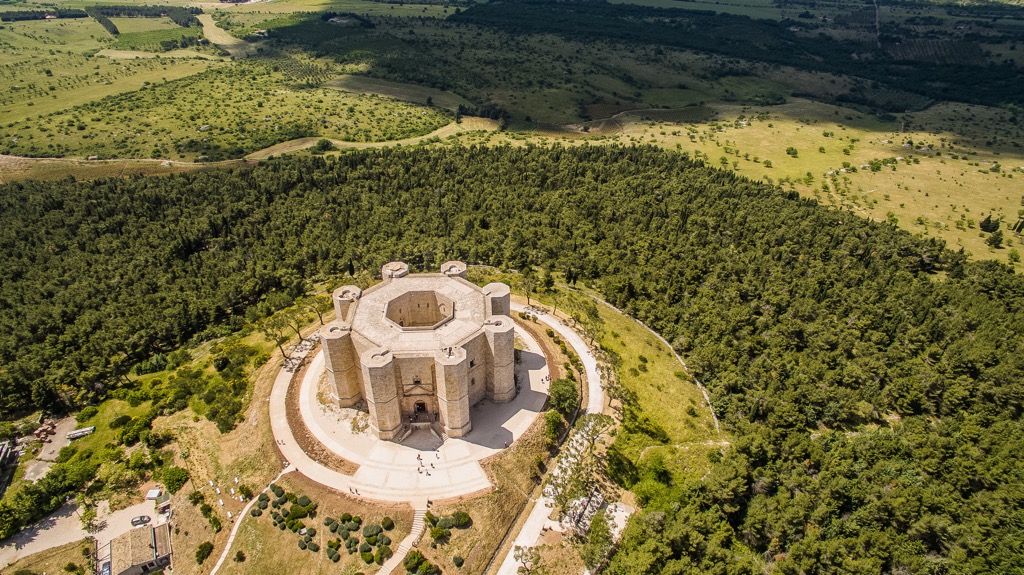
Castel del Monte sits atop a hill surrounded by picturesque vineyards. Upon reaching the citadel, it's possible to tour its interior. Several rewarding hikes lead to Castel del Monte. The shortest route is from L'Altro Villaggio, which follows the path near the road up to the castle. This hike is roughly 3 km (2 mi) in length and takes less than an hour to complete.
If you're looking for a longer walk you can follow a section of the "Jazzo Rosso - San Magno - Castel del Monte," a 65 km (40 mi) pedestrian and cycling path that passes many of the park's historical landmarks.
The G route of this trail leads from Serra Cecibizzo (459 m/1,506 ft) to Castel del Monte. This walk is 10.2 km (6.3 mi) in length and takes approximately 2 hours to complete.
At the heart of Alta Murgia National Park is one of its most fascinating geological features, Pulo di Altamura. This kart sinkhole is the largest of its kind in the park and one of the largest in Italy.
A hike around Pulo di Altamura's 1,800 m (5,900 ft) perimeter is one of the park's most rewarding walks. Pulo di Altamura is an excellent spot for nature watching, as common ravens and other rare birds are known to nest in the sinkhole's cliffs.
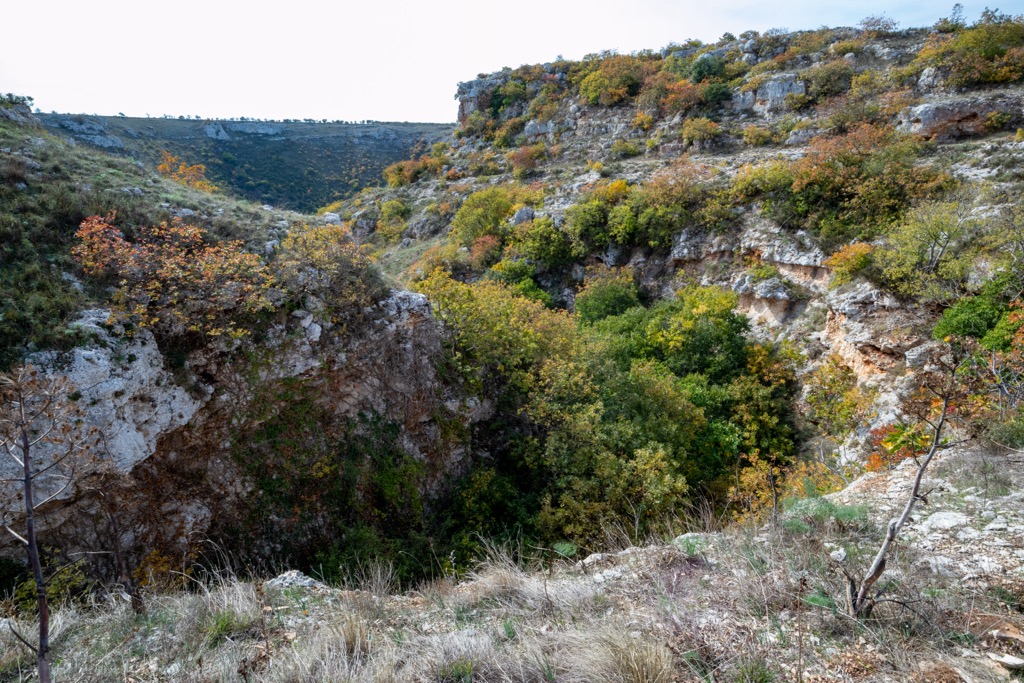
It's possible to park by Pulo di Altamura near or at the Arrampicata Pulo Altamura parking area. The walk around Pulo di Altamura is approximately 2 km (1.2 mi) in length and takes less than an hour. Ensure you stop by the Belvedere Pulo di Altamura to snap the perfect picture of this remarkable sinkhole.
Rocca del Garagnone, or Garagnone Castle, is one of the most incredible archeological sites in Alta Murgia National Park. From afar the summit of this rocky hill resembles a mesa but is, in fact, the remnants of an important medieval fortification.
Rocca del Garagnone is known as the "Invisible Castle," as it was built out of rocks from the Apennines, helping it blend into its surroundings. It originally consisted of a two-story building with six rooms and is believed to have been built in the eleventh century. Unfortunately, an earthquake destroyed the castle in 1731.
One of the best ways to hike up to Rocca del Garagnone is from the Poggiorsini railway station, partly following the Strada Vicinale del Garagnone. This trail is approximately 8.5 (5.3 mi) km in length and takes around 2 hours to complete.
Monte Caccia (686 m/2,251 ft) is the highest mountain in Alta Murgia National Park (alongside Torre Disperata). The gentle hike to the summit of Monte Caccia provides views across Alta Murgia's rolling hills. A television broadcast station marks the summit of Monte Caccia.
You'll find several possible routes up Monte Caccia, the shortest of which starts from L'Altro Villaggio near Castel del Monte. This walk is 12.3 km (7.6 mi) in length and takes 2 or 3 hours to complete.
It's also possible to walk from the town of Spinazzola to Monte Caccia. This route takes you to Monte Posa (606 m/1,988 ft) and then Monte Caccia. This hike is 17.6 km (11 mi) in length and takes around 4 hours to complete.
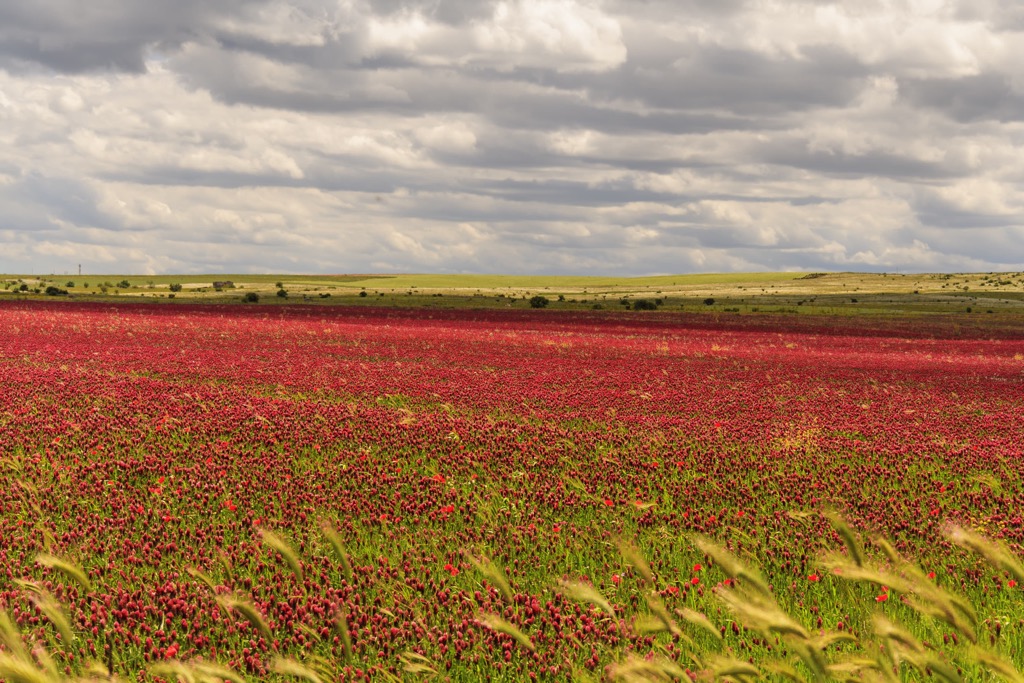
Alta Murgia National Park offers a range of unique accommodation options, from the plateau's quaint masserie to the metropolitan city of Bari. Read on to find out about some of the main towns and cities near Alta Murgia National Park.
Bari is the capital of Apulia and one of the largest metropolitan areas in southern Italy, with a population of over 1.3 million people. Bari is a popular tourist destination as it boasts a bustling harbor and some of the finest beaches in the country.
During your stay in Bari, don't miss out on visiting the ornate eleventh-century Basilica di San Nicola, an important pilgrimage site for Christians worldwide.
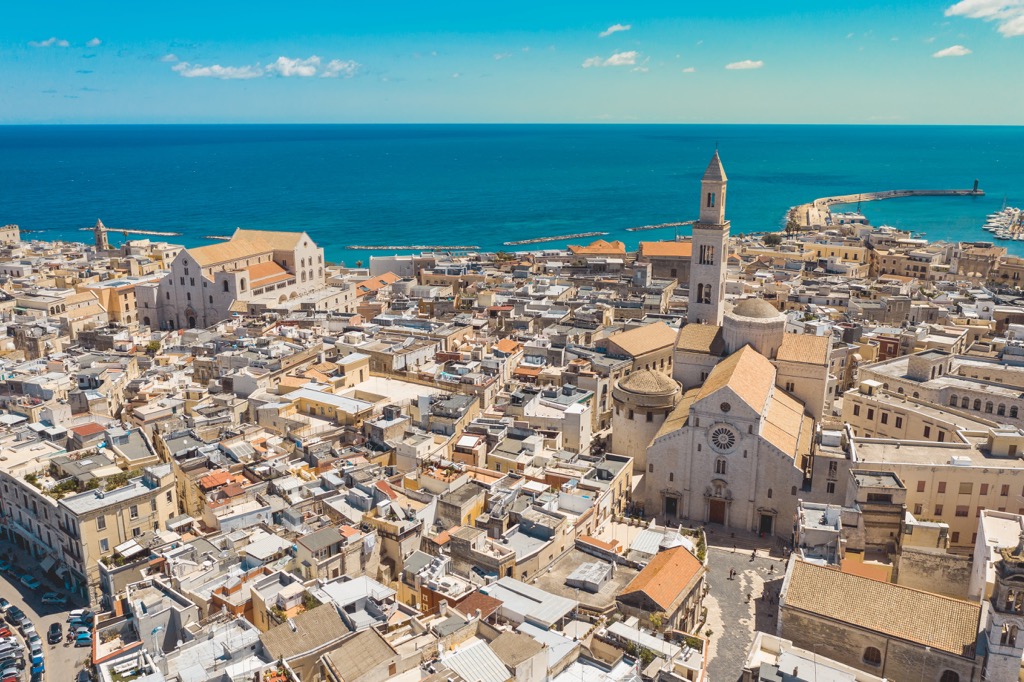
Bari also boasts some world-class museums, like the Metropolitan Art Gallery of Bari (Pinacoteca Metropolitana di Bari) and the twelfth-century Swabian Castle (Castello normanno-svevo). Bari is located approximately 50 km (31 mi) from Alta Murgia National Park.
Popular hotels in Bari include Parco Dei Principi Hotel Congress, iH Grande Albergo Delle Nazioni, and Hotel Boston.
Gravina in Puglia is home to Alta Murgia National Park's headquarters. This large town is perched on a 100 m (328 ft) deep ravine on the southern edge of Alta Murgia National Park. It's an ancient city, having been inhabited since the Paleolithic period.
One of the most exciting attractions in Gravina is the Gravina Underground (Gravina Sotterranea), a labyrinth of underground tunnels, cellars, and aqueducts under the town dug out of solid rock. Another must-see attraction is the Renaissance-Romanesque style Gravina Cathedral, which dates back to the eleventh century.
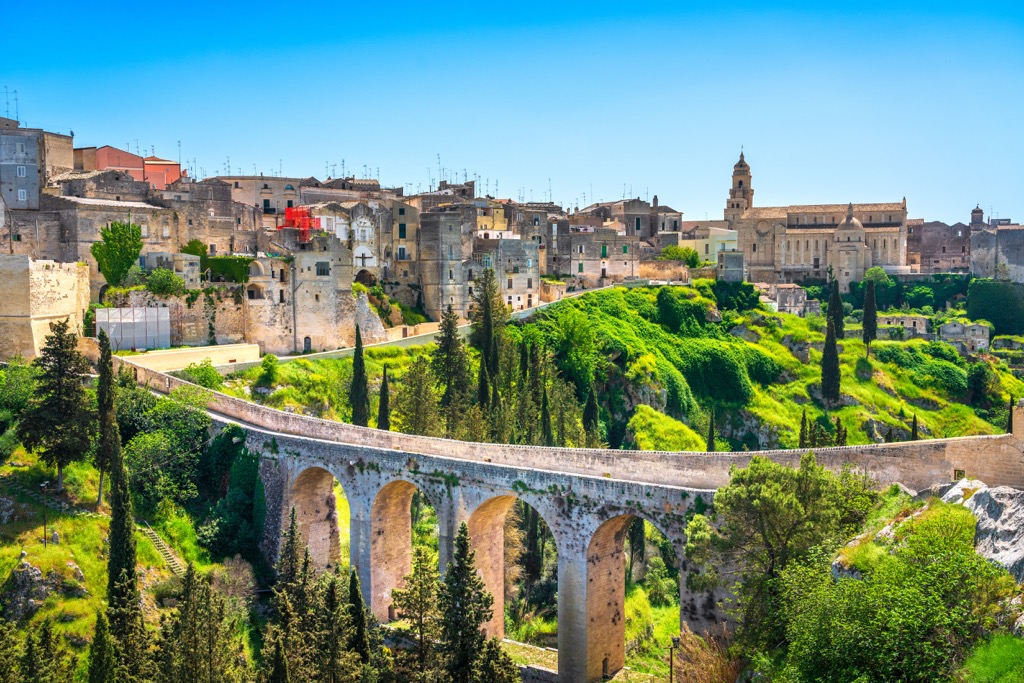
Popular hotels in Gravina in Puglia include B&B Sul Ponte, Principe Relais Suite & Spa, and Palazzo Sottile Meninni.
Located just outside Alta Murgia National Park, less than 15 km (9 mi) from Gravina in Puglia, is the town of Altamura. Equally as historic as its neighbor, Altamura was encircled by megalithic walls between the third and sixth centuries before being sacked by the Saracens in the tenth century. King Frederick II then refounded the town in 1232.
The town's biggest attraction is the Altamura Cathedral, built by King Frederick II shortly after he re-established the town. Altamura is perfectly positioned if you're looking to visit Pulo di Altamura, which is located roughly 10 km (6 mi) away.
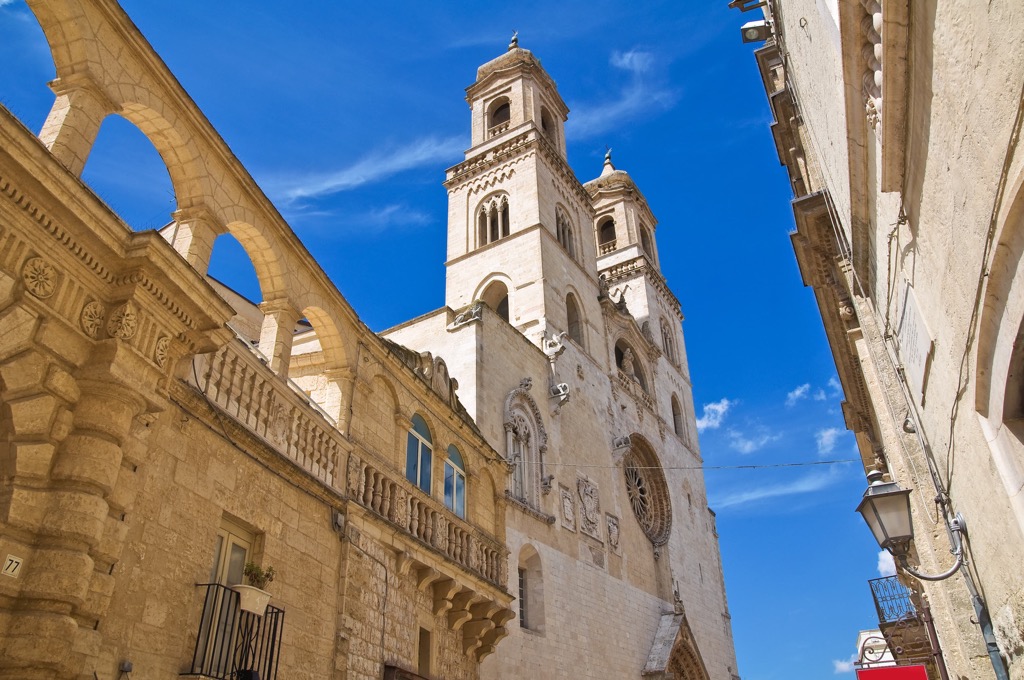
Popular hotels in Altamura include Fuori le Mura, Hotel San Nicola, and B&B Dimora Santa Chiara. If you're looking to stay at a traditional masserie near Altamura, consider Masseria Chinunno.
Perched on the western flank of the Murge plateau is the ancient town of Minervino Murge. Minervino Murge is located at 429 m (1,407 ft) above sea level and affords sweeping views of the park, earning it the nickname the "Balcony of Puglia."
Minervino Murge is home to top attractions like the Scesicola old town, which features well-preserved medieval architecture. You shouldn't miss out on visiting St Michael's Cave, a two million-year-old cave that contains a tenth-century church.
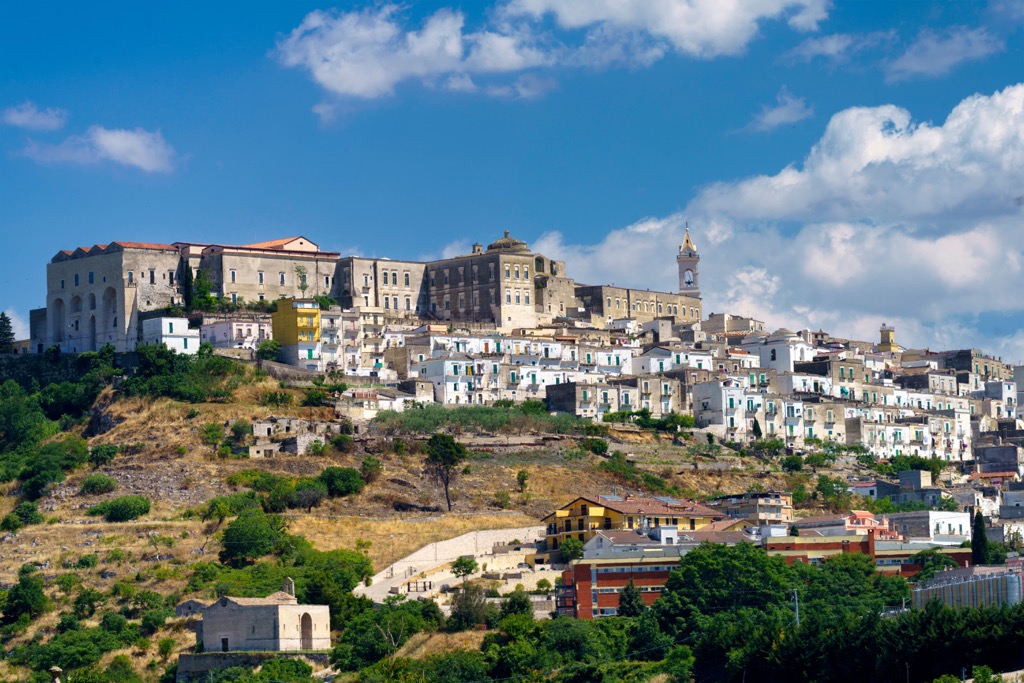
Popular hotels in Minervino Murge include B&B Del Corso and Casa Pistacchio. Minervino Murge is within 25 km (15.5 mi) of Masseria Torre Di Nebbia, one of the finest masserie in Alta Murgia National Park.
Ruvo di Puglia is a popular destination for foodies visiting Alta Murgia National Park. It's considered the wine and olive oil capital of the Murgia region and produces some of the finest olive oil in Apulia.
Ruvo di Puglia is home to the twelfth-century Cathedral of Ruvo di Puglia, considered one of the best examples of late Apulian Romanesque architecture. It's also home to several renowned museums, including Palazzo Jatta and Palazzo Caputi.
Popular hotels in Ruvo di Puglia include Hotel Pineta and Tenuta Tedone Consolini.
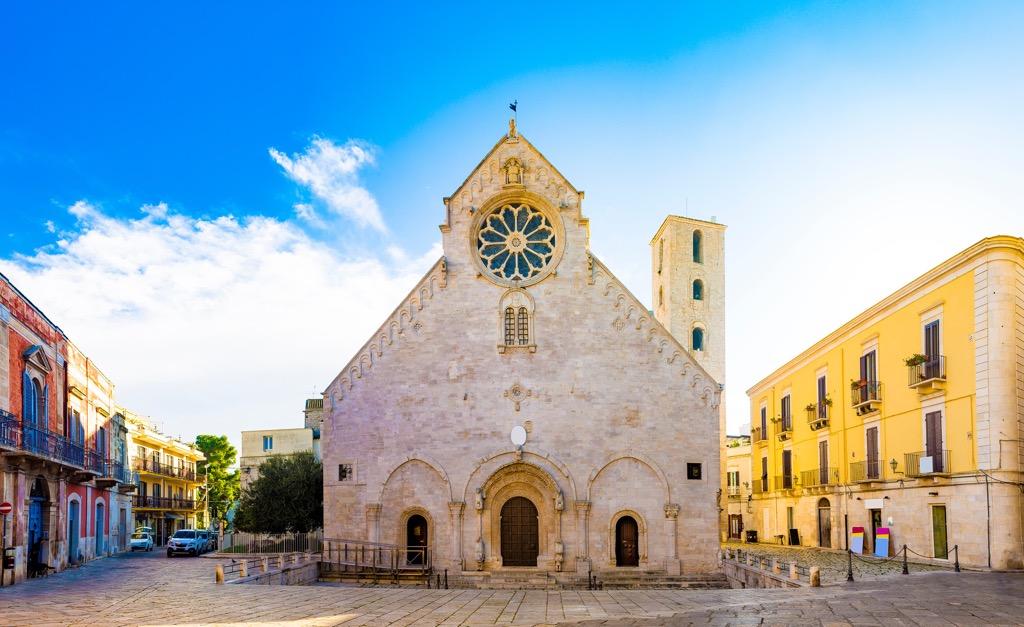
Explore Alta Murgia National Park with the PeakVisor 3D Map and identify its summits.








